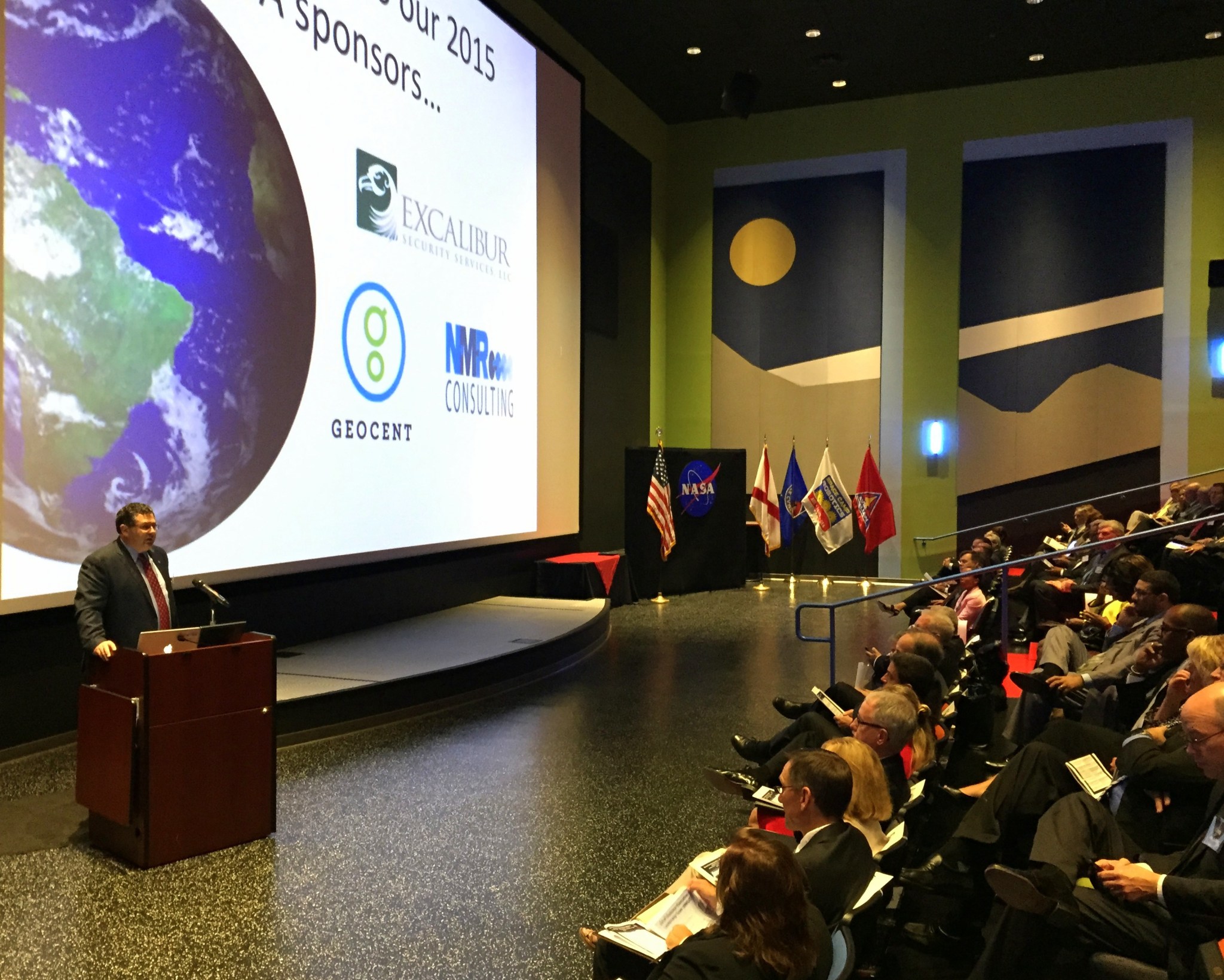In This Week’s Star
- Space Station Crew and Ground Controllers Mark Mid-point of One Year Mission
- NASA Administrator Bolden Attends Minority Partnerships Meeting in Huntsville, Tours Alabama A&M University
- Team Up With Feds Feed Families to Knock Out Hunger
- Marshall to Host Lunar Eclipse Broadcast Event Sept. 27; Experts to Answer Questions Online
- Top Honors Awarded to NASA Contractors, Support Teams During 2015 Industry and Advocates Ceremony
- Marshall Center Hosts Combined Federal Campaign Kickoff Event Sept. 22
- NASA Physicist Trent Griffin Recognized on National TV for Community Outreach
- Large Crowds Turn Out for ‘International Observe the Moon Night’ Sept. 19
- This Week in NASA History: STS-86 Launches to Dock With Russian Space Station — Sept. 25, 1997
- NASA Administrator Charles Bolden’s Visit to Huntsville, Alabama A&M Featured On ‘This Week @NASA’
Space Station Crew and Ground Controllers Mark Mid-point of One Year Mission
By Bill Hubscher
His mornings start the same as millions of others around the planet: The alarm sounds, he climbs out of bed, gets morning coffee… But as he glances out the window before starting his short commute to work, Scott Kelly‘s view is one that few people have had the privilege of enjoying first hand.
On Sept. 15, Kelly, the commander of the International Space Station, passed the half-way mark of a one-year mission on the orbiting laboratory. The one-year mission began in March 2015, enabling the most detailed study of long-duration human spaceflight to date.
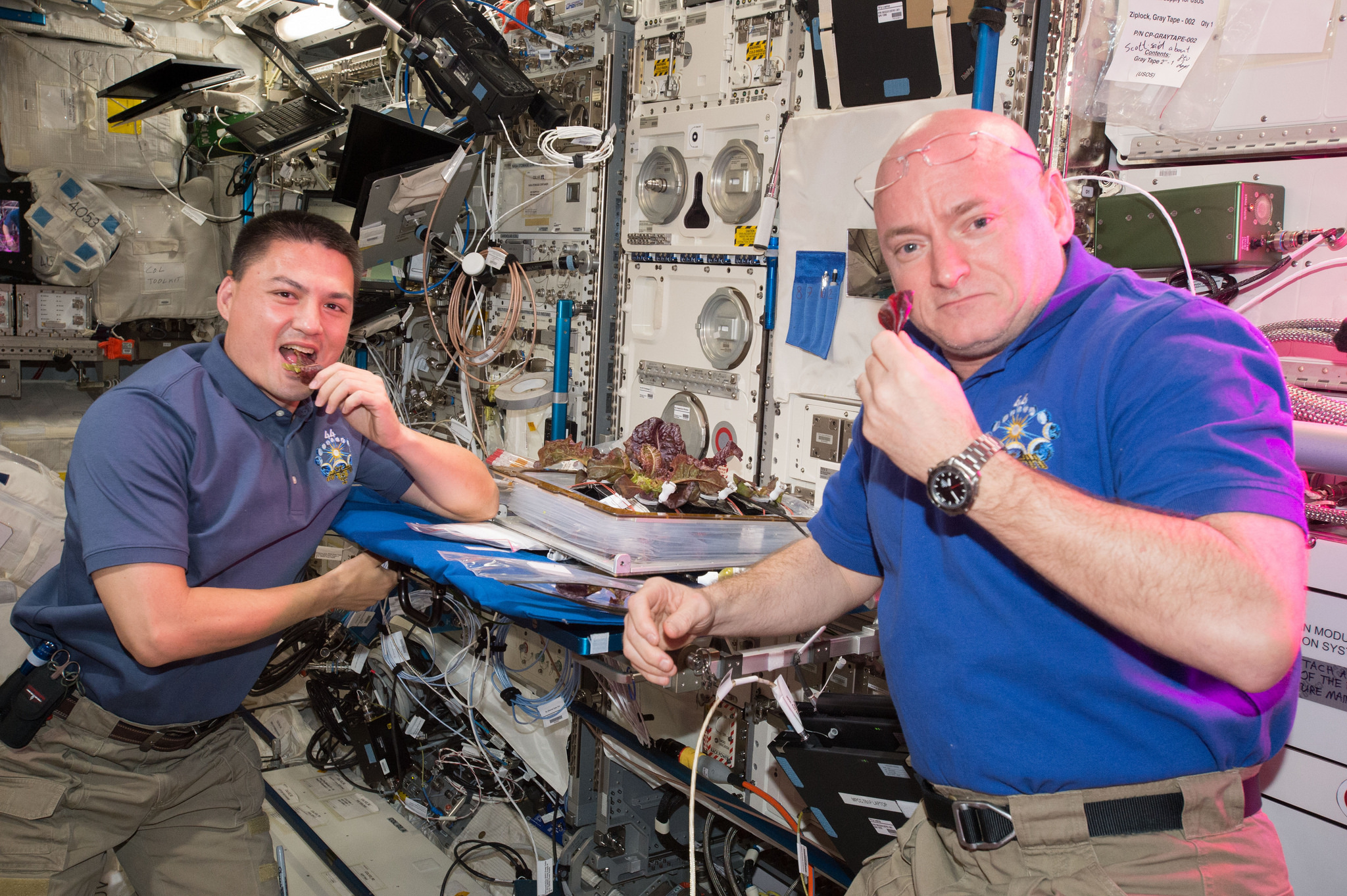
The average International Space Station expedition lasts four to six months. Kelly and Roscosmos (also known as the Russian Federal Space Agency) cosmonaut Mikhail Kornienko are spending a full year on the station, not only to advance knowledge of our world, but also to conduct science on themselves — measuring changes in motor skills, eyesight, fluid shifts in their bodies and basic neurology. These investigations on the world’s only microgravity lab are crucial to preparing humans for exploration of deep space, including our journey to Mars.

The Payload Operations & Integration Center at NASA’s Marshall Space Flight Center has been with them every step — and the 2,736 orbits — along the way. In Huntsville and around the globe, hundreds of experts work on the ground to ensure the success of science operations on the space station. For the one-year crew mission, and for every expedition, the POIC team begins months ahead of each expedition to plan and coordinate investigations on the space station, making sure astronauts have the resources necessary to succeed and produce results that benefit people on Earth and pave the way for deep-space exploration.
While one of the investigations from the first six months opened up another collaborative avenue for NASA flight controllers, it also presented new challenges for the team.
“Probably one of the biggest hurdles was coordinating, planning and executing the first session of the Fluid Shifts study,” said Becky Grimaldi, payload operations manager at Marshall for space station Expeditions 43 and 44, each of which ran about three months. “Fluid Shifts examines the various fluids moving around the body in microgravity and pressures it can put on organs such as the eyes and brain. In orbit, the experiments involve activities in the Russian segment of the station and we had not done those types of operations before. We needed to coordinate with our Russian counterparts a lot more than usual.”
These investigations astronauts perform on themselves are providing new insights into the human body and how it reacts to long-duration space travel. Data from these studies will affect all aspects of the journey to Mars, which could last two-and-a-half to three years. These investigations carry potential benefits for humans on Earth, from helping patients recover after long periods of bed rest to improved monitoring for people whose bodies are unable to fight infections.
In fact, Scott Kelly will investigate illness on the space station in the coming months with assistance from his twin brother on Earth. Mark Kelly is also a veteran NASA astronaut who flew on four space shuttle missions.
“We’re conducting a lot of science comparing two people with identical DNA,” said Stephanie Dudley, a payload operations manager at Marshall who takes over lead duties from Grimaldi for the next expedition. “We sent up the first flu vaccine on board for Scott to take this autumn, and Mark will take the same injection on the ground so we can compare the two and find out if microgravity alters the effectiveness of such medicines. Since astronauts don’t usually fly on a mission longer than six months, every bit of data we acquire for the rest of this mission will be new information.”
Science performed on the space station now is helping NASA prepare for future deep space missions, and the POIC at Marshall is critical to that research, benefiting space exploration as well as life on Earth.
The POIC is essentially NASA’s mission control for science aboard the space station, with flight controllers on hand 24 hours a day, 365 days a year to help astronauts in orbit and scientists on the ground with hundreds of investigations.
More than 2,400 scientists from over 83 countries have conducted more than 1,700 investigations on the space station because it is a laboratory with unique characteristics such as a microgravity environment, a great view of Earth, and direct exposure to space.
Hubscher, an ASRC Federal/Analytical Services employee, supports the Office of Strategic Analysis & Communications.
NASA Administrator Bolden Attends Minority Partnerships Meeting in Huntsville, Tours Alabama A&M University
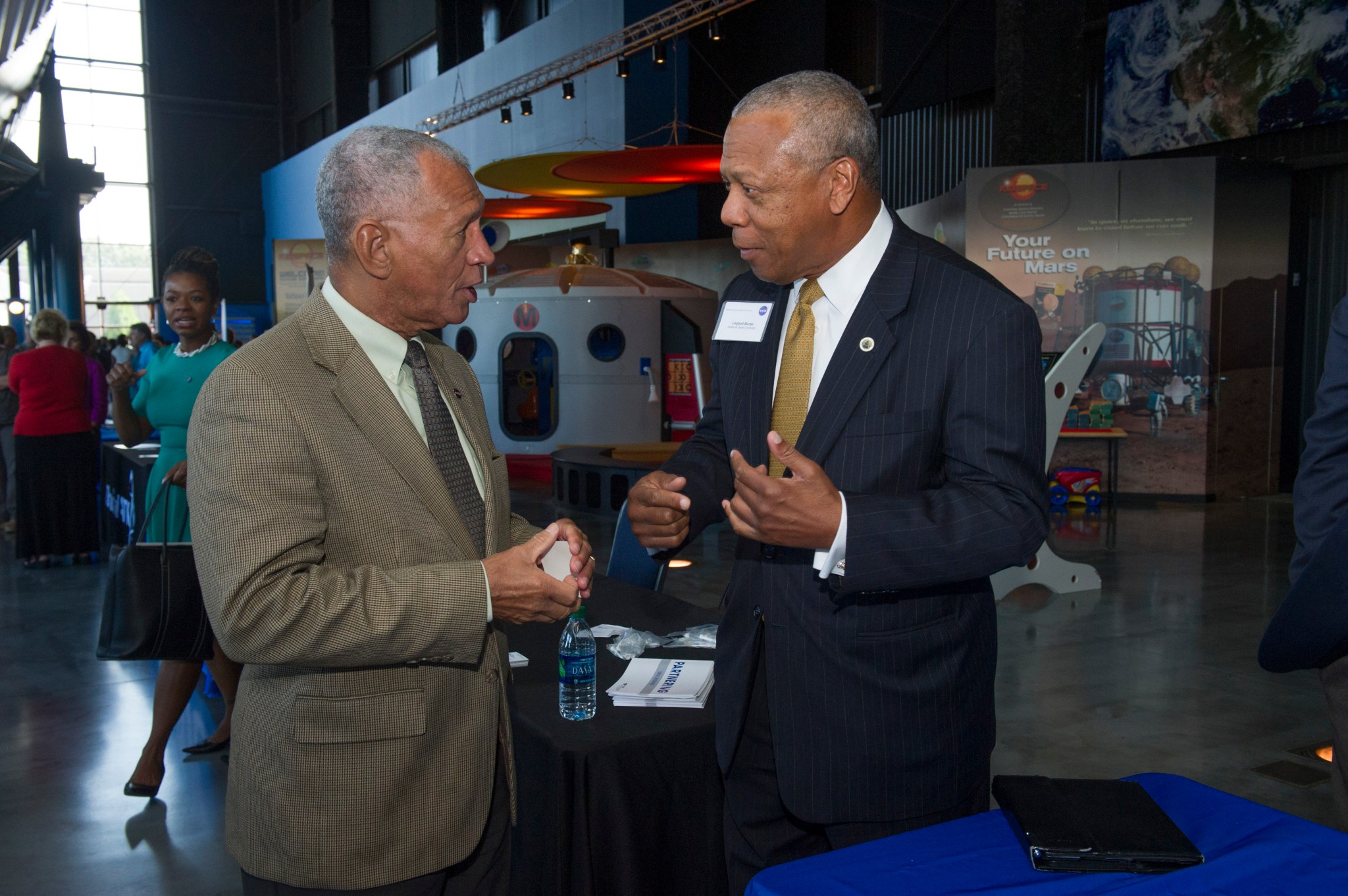
Team Up With Feds Feed Families to Knock Out Hunger
By Brian C. Massey
Calling all Hunger Heroes! With only seven days left in this year’s Feds Fight Hunger campaign, NASA Marshall Space Flight Center team members are encouraged to help make a final push to reach this year’s 30,000-pound goal to help local families in need.
“We’re really looking for the Marshall family to step up in the last week,” said Renea Scoble, co-lead for Marshall’s Feds Fight Hunger. “In our own backyard, approximately 1 in 4 children go hungry — nearly 60,000, or more than the population of Decatur. That’s not in the state. That’s not in the country. That’s just here in North Alabama.”
It is estimated that it takes 112 pounds each week to feed a family of four. So far this year, Marshall team members have collected enough to feed 119 families in need –almost half the goal of 268 families.
“If each Marshall team member donates 5 pounds of food, we will easily surpass this year’s goal,” Scoble said. “So we’re asking everybody to donate this week and help feed as many local families as we can.”
Marshall organizations are divided into nine superhero-themed teams that are competing for center-wide bragging rights. Team Wonder Woman — which consists of the Office of Strategic Analysis & Communications, Office of Human Capital, Office of Chief Counsel, Office of Diversity & Equal Opportunity, and Office of the Chief Financial Officer — currently leads with 34 families fed.
Donation bins are located around the center, and team members are encouraged to mark their donations with labels for their respective teams. Suggested items for donation include peanut butter, canned fruits, tuna, beans, rice, macaroni and cheese, chili, canned stews, canned soups, canned meats, canned vegetables and pop-top items.
Contributions from this year’s campaign will benefit the Food Bank of North Alabama, which serves 11 counties in North Alabama that include Huntsville, Madison, Decatur and many smaller rural areas. In 2010, 140,228 people in the 8,011 square-mile service area lived at or below the poverty level.
Feds Fight Hunger is part of the federal Feds Feed Families campaign. Since launching in 2009, as part of the United We Serve campaign, Feds Feed Families has collected nearly 39 million pounds of food for those in need, including 14.8 million pounds in 2014.
For more information, visit the Feds Feed Families home page of the Feds Fight Hunger ExplorNet page.
Massey, an ASRC Federal/Analytical Services employee and the Marshall Star editor, supports the Office of Strategic Analysis & Communications.
Marshall to Host Lunar Eclipse Broadcast Event Sept. 27; Experts to Answer Questions Online
On Sept. 27, NASA’s Marshall Space Flight Center will host a live broadcast event highlighting the much-anticipated 2015 total lunar eclipse, often referred to as the supermoon. Coverage is scheduled from 7-10:30 p.m. on NASA TV at: https://www.nasa.gov/multimedia/nasatv/.
Guests include Mitzi Adams, NASA solar physicist at Marshall, as well as other experts from Johnson Space Center, Ames Research Center and other space-based facilities — all of whom will discuss the eclipse and their experiences supporting lunar-themed content.
The Ustream event will feature live video feeds of the eclipse from special cameras at Marshall, as well as the Griffith Observatory in Los Angeles.
Fans interested joining the online conversation can tweet questions to @NASA_Marshall using the hashtag #askNASA.
The Sept. 27 supermoon eclipse will last just over one hour and will be visible to North and South America, Europe, Africa and parts of West Asia and the Eastern Pacific. Weather permitting; you can see the total eclipse starting at 9:11 p.m., peaking at 9:47 p.m.
Top Honors Awarded to NASA Contractors, Support Teams During 2015 Industry and Advocates Ceremony
By Christopher Blair
On Sept. 17, several large and small business prime contractors, subcontractors and civil-service teams were honored for their success and support of aerospace business with NASA’s Marshall Space Flight Center and for supporting NASA’s mission.
The awards were presented during the 2015 Industry & Advocates Awards ceremony, part of the annual Marshall Small Business Alliance meeting at the U.S. Space & Rocket Center. The awards honor those companies, teams and individuals that demonstrated success and sustainable achievement toward meeting NASA’s aerospace missions.
The 2015 award recipients include:
Large Business Prime Contractor of the Year
- Teledyne Brown Engineering Inc. of Huntsville
Small Business Prime Contractor of the Year
- Dynetics Technical Services of Huntsville
Small Business Subcontractor of the Year
- Willbrook Solutions Inc. of Huntsville
Small Business Prime Contractor Excellence Award Recipients
- Al-Razaq Computing Services of Houston
- ASRC Federal/Analytical Services Inc. of Huntsville
- Bastion Technologies of Houston
- Deltha-Critique NSS Joint Venture of New Orleans
- Info-Pro Corp. of Huntsville
Small Business Subcontractor Excellence Award Recipients:
- Arcata Associates Inc. of Huntsville
- Certified Manufacturing Inc. of Holt, Florida
- Emerald City Initiatives Inc. of Huntsville
- ICO Rally of Palo Alto, California
- Stars & Stripes Aerospace of Palestine, Texas
Mentor Protégé Agreement of the Year Award Recipients
- Teledyne Brown Engineering Inc.
- Martin Federal Consulting LLC of Huntsville
Procurement Person of the Year
- Kimberly N. Williams
Technical Person of the Year
- Virginia B. Garrison
Small Business Technical Coordinator of the Year
- Kimberly L. Keith
Program Person of the Year
- Robert J. Devlin
The center-level award recipients in several categories — Large and Small Business Prime Contractors of the Year, Small Business Subcontractor of the Year, Technical Support Person of the Year and Procurement and Program Support Teams of the Year — are eligible candidates for the agency-level Small Business Industry Awards.
Guest speakers and award presenters for this year’s awards ceremony included Marshall’s Deputy Center Director Todd May; Kim Whitson, director of the Marshall Office of Procurement; and Dave Grove, program manager of the NASA Office of Small Business Programs.
Established in 2007, the Small Business Alliance helps small businesses pursue NASA procurement and subcontracting opportunities. NASA civil service employees nominate eligible individuals and organizations for awards. A panel of NASA business procurement officials evaluates each nominee’s cost-conscious business practices, innovative processes and adoption of new technologies, as well as their overall contributions to NASA’s mission and the agency’s Small Business Program.
Blair, ASRC Federal/Analytical Services employee, supports the Office of Strategic Analysis & Communications
Marshall Center Hosts Combined Federal Campaign Kickoff Event Sept. 22
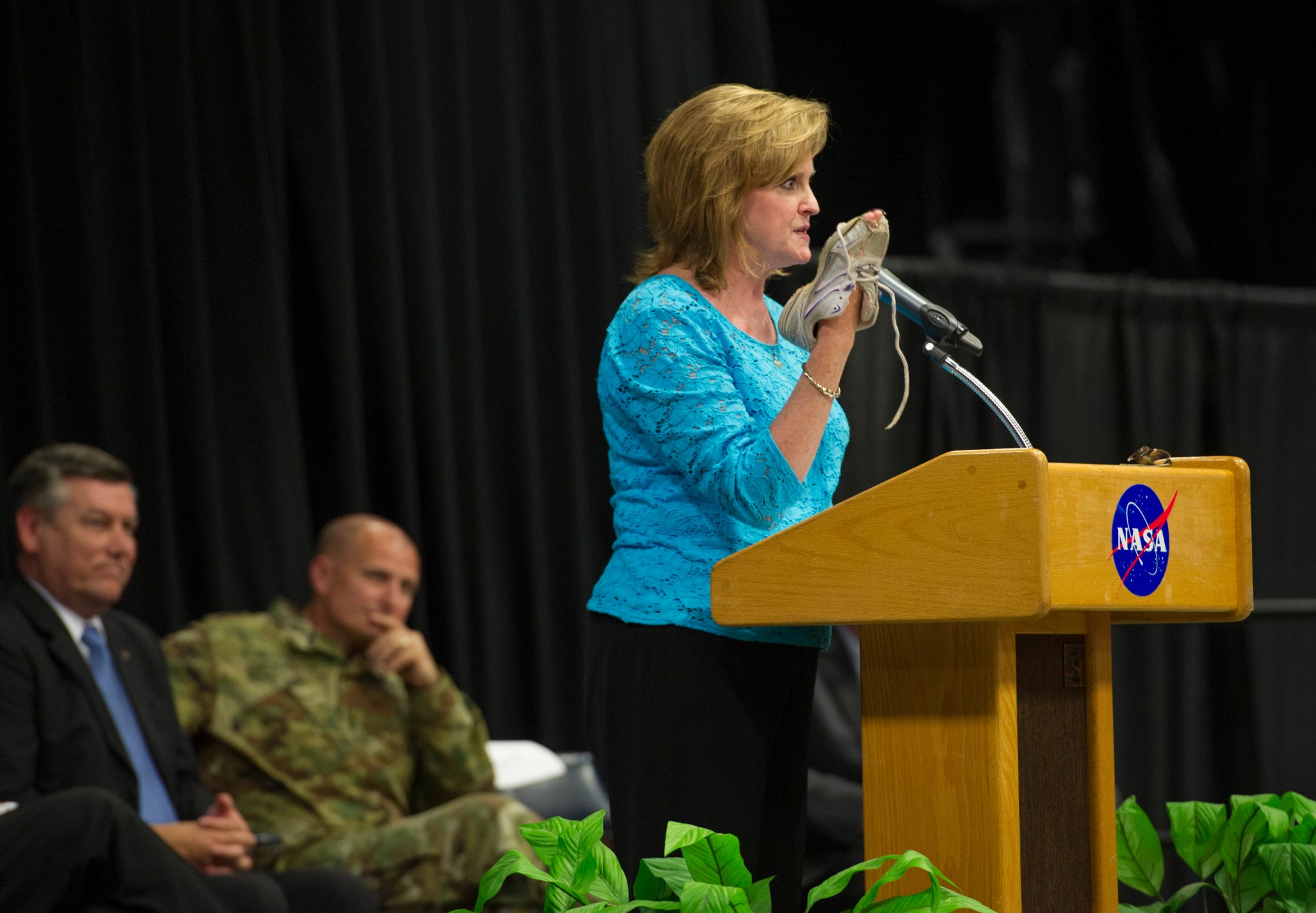
Pam Clasgens, development director for HEALS, Inc, spoke to more than 400 attendees of the 2015 Combined Federal Campaign Kickoff and Charity Fair hosted at NASA’s Marshall Space Flight Center on Sept. 22. Marshall Center Director Patrick Scheuermann, left, and Brigadier General Edward Daily of the U.S. Army Materiel Command, center, look on as Clasgens holds up a child’s tattered shoe who was directly impacted by the “Heels for HEALS” shoe drive. Forty local charities that benefit from CFC donations were represented at the event and attendees were given a unique opportunity to learn more about them during the charity fair. For more information, or to donate, visit the CFC ExplorNet page.
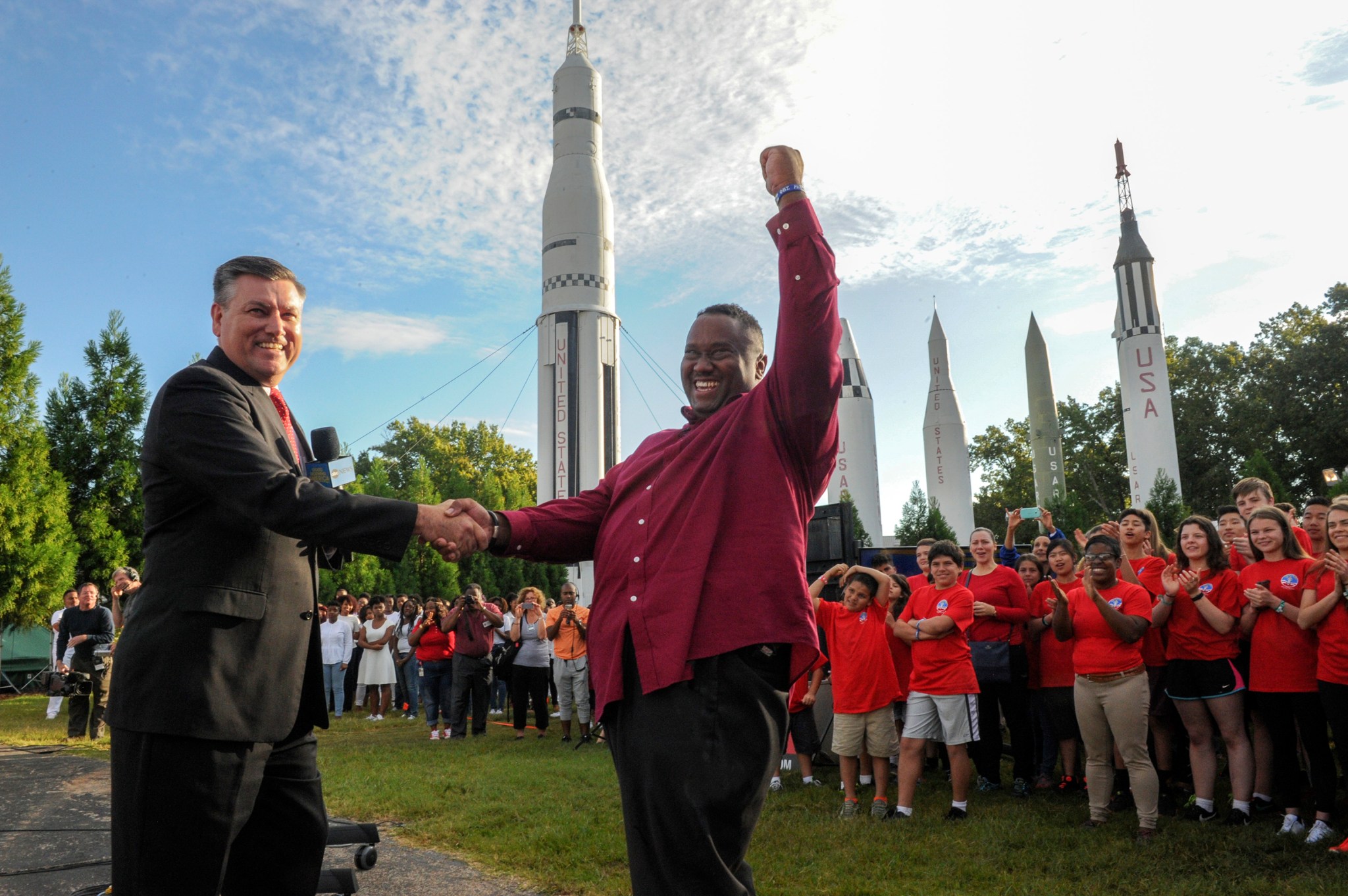
NASA Physicist Trent Griffin Recognized on National TV for Community Outreach
By Bill Hubscher
When Trent Griffin, a physicist at NASA’s Marshall Space Flight Center, went to answer the front door very early in the morning on Sept. 17, he was expecting it to be his sister’s friend who needed a ride to the airport. Imagine his surprise when a camera crew from ABC’s “Good Morning America” was there and whisked him away in a limousine for a very memorable day.
For nearly 30 years, the Huntsville native has gone out of his way to make his hometown a better place as a member of multiple community service groups, but also by spreading his love for STEM education (science, technology, engineering and math) to as many students possible.
That morning, Griffin was recognized for his tireless efforts on the ABC network television program Good Morning America as part of their “Above and Beyond” campaign.
Griffin was interviewed live on the air at the U.S. Space & Rocket Center — the official visitor center for Marshall and home to Space Camp. He was surprised by the attendance of his extended family — more than 50 of whom were at the event — and the 1,000 people who also arrived before dawn to honor him. He also received a special call during the broadcast from NASA astronaut Scott Kelly, the current commander of the International Space Station, who thanked Griffin for his service to the community and for his work supporting the station.
“A lot of people look up to astronauts, but we rely on the people who work in the control centers who help us do our job up here,” said Kelly. “What I really look up to are people that do things when they don’t expect any recognition, and I think that’s what you do by donating your time and getting these kids on the right track and be in a position where they can be successful adults. You’re the real role model here.”
“I am completely overwhelmed,” said Griffin. “It is wonderful that all these people — family, friends, co-workers and some of the kids I’ve helped — would all come support what I try to do for our community. I hope we can all come together and go forward as part of the village helping kids find their direction.”
Griffin is the most requested speaker through Marshall’s Speakers Bureau for a program he created called Simple Science, aimed at creating interest in STEM education with young students by performing science experiments using items found in every home. He has lived in Huntsville his entire life, earning a degree in physics from Alabama A&M University in Huntsville before starting at the Marshall Center.
Over the course of his NASA career, he has supported the Space Shuttle Program, the Chandra X-ray Observatory, and numerous investigations and support systems on the International Space Station. Griffin currently is on a team building a second microgravity science glovebox — a sealed and enclosed work area accessible to the crew through glove ports that will enable even more valuable research on the station.
“Trent injects a personal warmth and zest into every role, even into jobs that might seem mundane,” said Mark Krome, Griffin’s supervisor in Marshall’s Space Systems Department. “He encourages those around him and is a mentor to co-workers and future engineers and scientists. He makes our job even more fun.”
Griffin’s non-NASA activities include participating as an active member of the Juvenile Conference Committee — helping at-risk kids stay out of trouble, and serving as current president of the Northwest Huntsville Neighborhood Association, working with residents to improve the local community at a grass-roots level.
He also dabbles in the arts as a poet and member of Art and Soul Society of Expression and, as a member of Phi Beta Sigma service fraternity, has dedicated his life to embodying the simple motto of that fraternity: “Culture for service and service for humanity.”
Hubscher, an ASRC Federal/Analytical Services employee, supports the Office of Strategic Analysis & Communications.
Large Crowds Turn Out for ‘International Observe the Moon Night’ Sept. 19
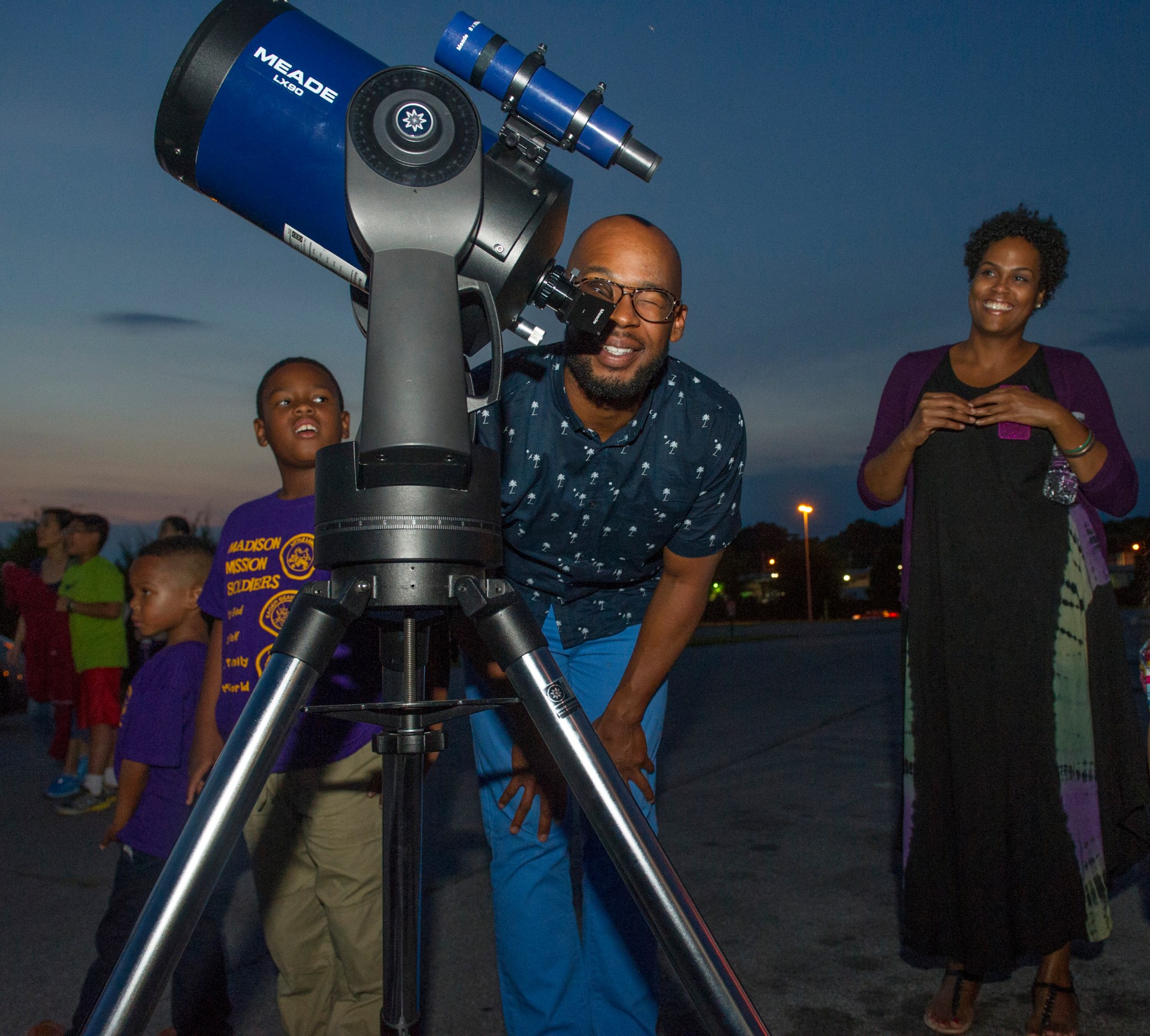
This Week in NASA History: STS-86 Launches to Dock With Russian Space Station — Sept. 25, 1997
This week in 1997, space shuttle Atlantis, STS-86, launched from NASA’s Kennedy Space Center on its way to dock with the Russian Mir space station. During nine Shuttle/Mir docking missions, NASA astronauts performed several experiments developed by researchers at NASA’s Marshall Space Flight Center. These experiments helped investigators prepare for experiments on the International Space Station. Here, Atlantis returns to Kennedy after its 10-day mission. The NASA History Program documents and preserves NASA’s remarkable history through a variety of products — photos, press kits, press releases, mission transcripts and administrators’ speeches. For more pictures like this one and to connect to NASA’s history, visit the History Program’s Web page.
NASA Administrator Charles Bolden’s Visit to Huntsville, Alabama A&M Featured On ‘This Week @NASA’
The recent visit of NASA Administrator Charles Bolden to Huntsville and Alabama A&M University is featured in the latest edition of “This Week @NASA,” a weekly video program broadcast nationwide on NASA-TV and posted online.
On Sept. 16, Bolden, joined by Glenn Delgado, NASA associate administrator for Small Business, attended the second annual Minority Partnerships Meeting, hosted by the Small Business Office of NASA’s Marshall Space Flight Center and held at the U.S. Space & Rocket Center. Following the morning meeting, Bolden toured engineering facilities at Alabama A&M University to hear student success stories from their successful Mentor / Protégé agreement with NASA and Aerojet Rocketdyne. Both events are part of a NASA initiative to connect the agency’s prime contractors with colleges and universities that serve minority students, otherwise known as Historically Black Colleges and Universities or Minority Serving Institutions.
View this and previous episodes at “This Week @NASA” or at https://www.youtube.com/user/NASAtelevision.





























